This article will provide a preliminary introduction to what this green "Cattle Chain" is and how it stands out among various Layer 2 solutions.
Written by: BUBBLE
Claiming to be the Solana on Ethereum, the "Cattle Chain" Eclipse recently gathered over 1,000 participants in its Discord community AMA, where it revealed that the TGE token's ticker is $ES, indicating that Eclipse's TGE may be coming soon. This article will provide a preliminary introduction to what this green "Cattle Chain" is and how it stands out among various Layer 2 solutions.

What is Eclipse?
Eclipse is a blockchain platform developed by Eclipse Labs, running on Ethereum's Layer 2, and is the first SVM chain allowed on Ethereum L2. Its goal is to combine Solana's fast execution capabilities with Ethereum's liquidity and security, providing developers with an efficient and robust environment to build decentralized applications.
Vijay Chetty serves as the CEO of Eclipse, having previously held positions as the business development lead at Uniswap and dYdX, and has also worked at BlackRock and Ripple. The Chief Technical Representative, Ben Livshits, is also highly qualified, having served as the Vice President of Research at zkSync, Chief Scientist at the Brave browser, and a research scientist at Microsoft Research, as well as being an associate professor at Imperial College London.
Eclipse has gone through three rounds of financing, with the latest Series A round raising $50 million at a valuation of $1 billion, led by well-known VCs such as HackVC and PolyChain, with follow-on investments from OKX Ventures, Bankless Ventures, and Delphi Digital. The luxurious team lineup combined with substantial funding has generated high expectations for Eclipse in the market.
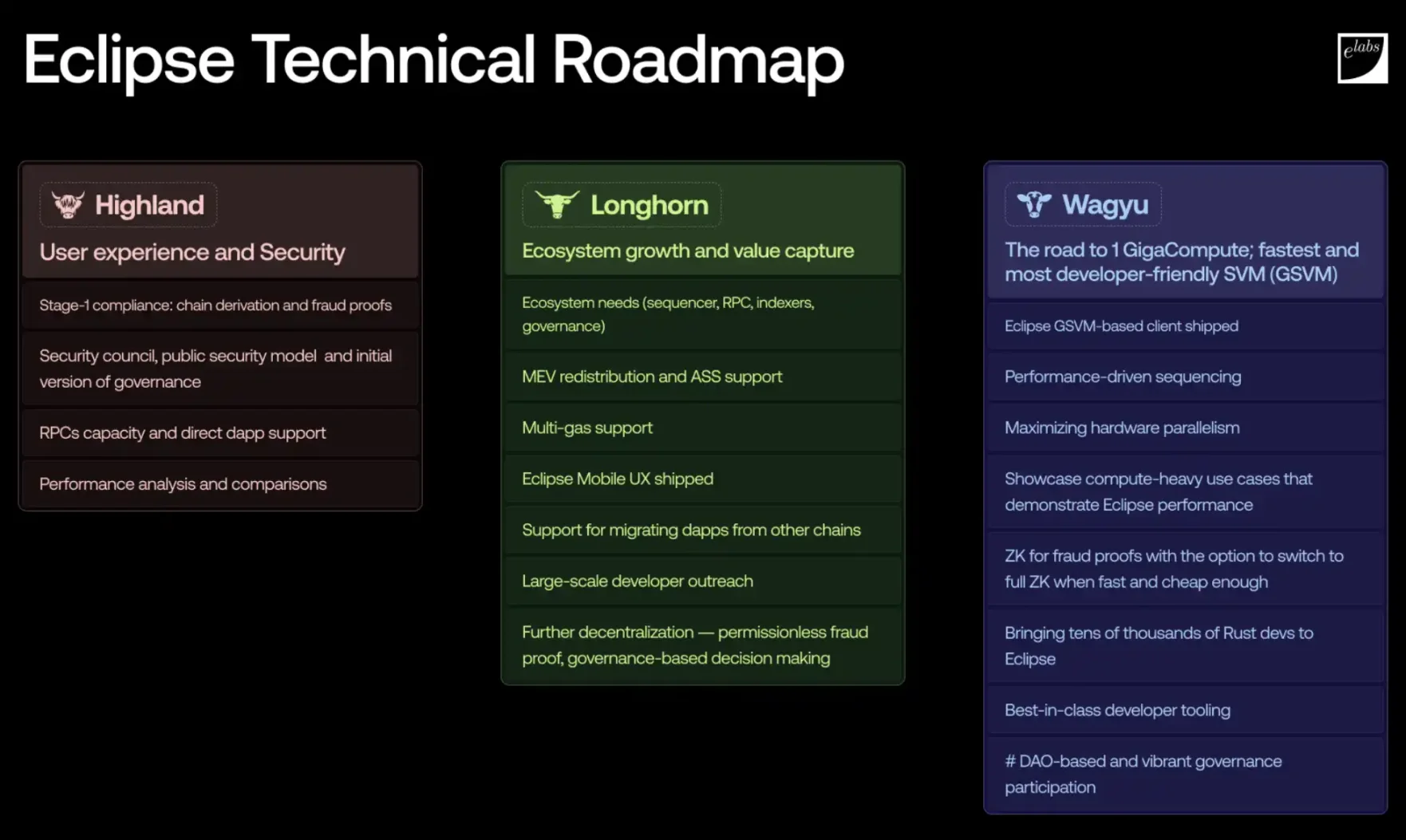
It is worth mentioning that Eclipse has a highly recognizable mascot, "Turbo the Cow," inspired by Eclipse's powerful sequencer model "beefy sequencer." This innovation is considered an important part of the platform's technological foundation, giving the mascot a more core character feature.

Since launching its mainnet last November, the platform has generated 930 ETH in fees, has over 467,000 Discord members, and more than 1 million wallets participating, processing over 17 billion transactions cumulatively. Eclipse processes over 250 million transactions daily, with trading volume on DEX exceeding $911 million, and daily transaction counts fluctuating between 120 million and 240 million.
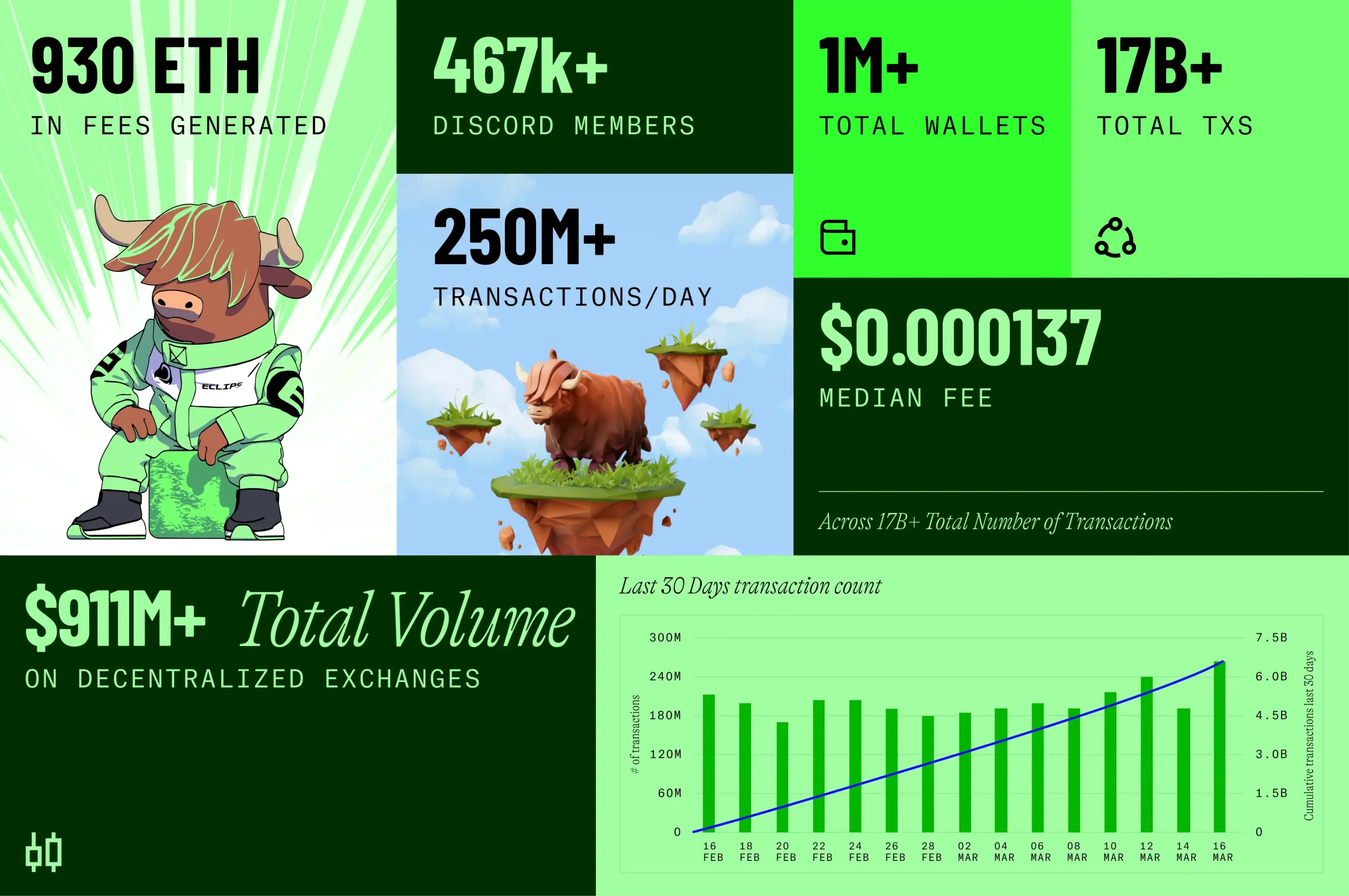
Solana on Ethereum?
For a platform that wants both Ethereum's security and liquidity while also desiring Solana's high-speed processing, how does Eclipse achieve this? This brings us to the concept of GSVM, or "GigaScale Virtual Machine," proposed by the official team.
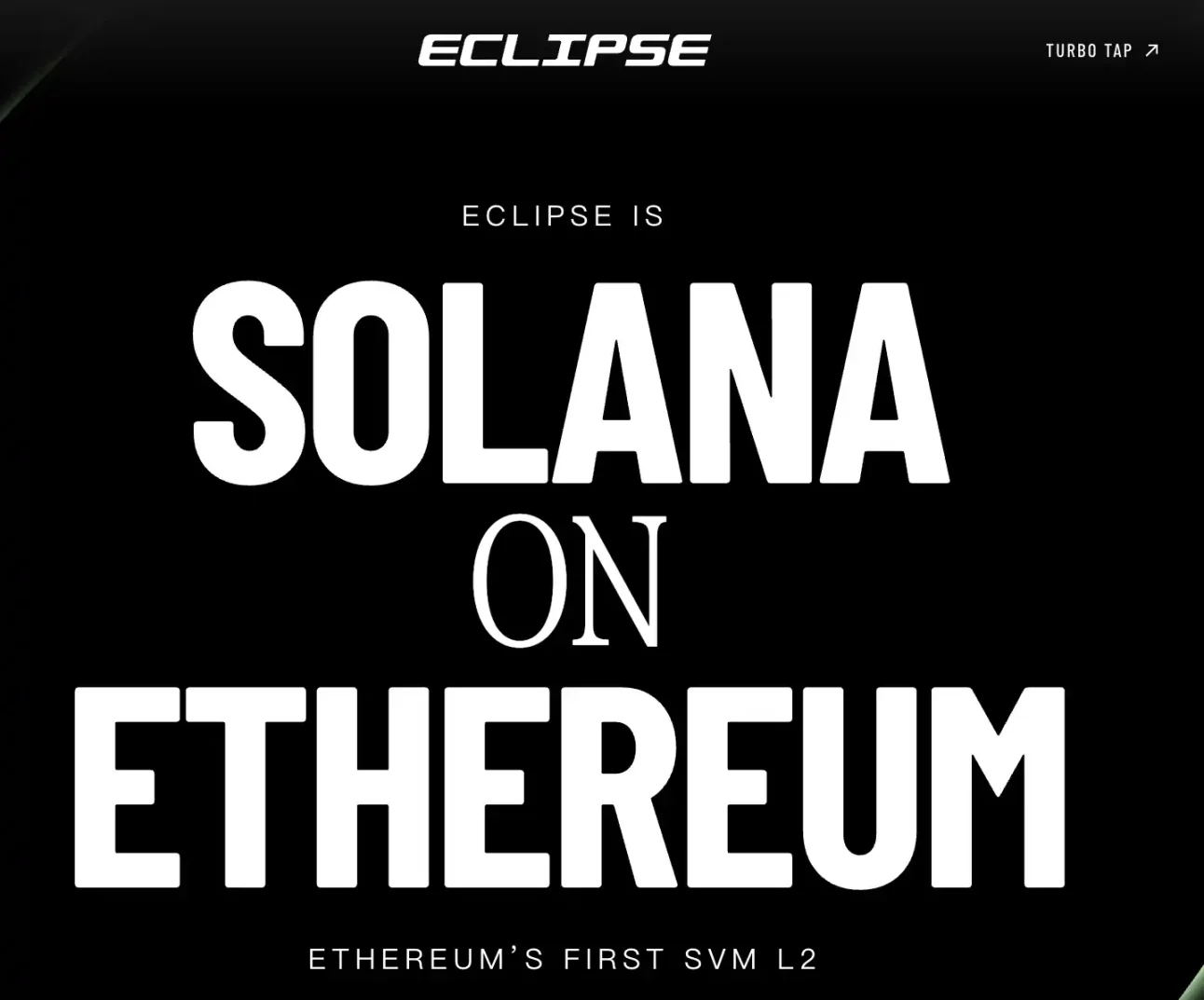
Traditional ETH Layer 2 solutions, such as "Optimistic Rollup," are limited by the serial execution of EVM and hardware adaptability. Therefore, Eclipse created GSVM through a collaborative design of software and hardware and cross-layer optimization, directly targeting Solana's "Sealevel parallel runtime," but implemented in L2 form. This allows it to possess the advantages of both chains, with four major innovations: "collaborative design of software and hardware," "dynamic scaling and hotspot isolation," "cross-layer optimization," and "computational abstraction and parallelization," forming a technological moat.

To understand it simply, if Ethereum is likened to an old city main road with "strict traffic rules and high tolls," and Solana is compared to Germany's highways with "multi-lane parallelism and low tolls," then Eclipse is like a highway built on the main road, where all entrances and exits must go through the main road.
The "collaborative design of software and hardware" equips vehicles with smart engines "GPU/FPGA" and automatic navigation "SmartNICs," adjusting speed based on road conditions. When trucks "complex contract transactions" pass through, a dedicated lane is opened to provide computational acceleration, while "simple contract transactions" only need to use the general fast lane. The role of "dynamic scaling and hotspot isolation" is to directly increase the number of lanes on the highway during peak times through dynamic CPU allocation, and if there are popular projects, this section can be isolated to provide resources without affecting the operation of the entire chain. "Cross-layer optimization" allows for real-time data interchange between fast gas stations, repair stations, etc. By pre-fetching transaction data, it informs the "gas station" to prepare Gas in advance, and using AI "enhanced scheduling," it can predict which blocks are likely to experience congestion or damage. "Off-chain computation + on-chain proof" allows complex calculations to be handled off-chain, while the toll station "Ethereum's main road" verifies vehicles through license plate recognition "ZK proof" to allow passage.
Through these pathways, Eclipse maximizes data security and processing efficiency, enabling it to handle more large-scale, widely adopted applications, making it more suitable for the current App era of blockchain.

Eclipse's Ecosystem Projects
As of now, the Eclipse ecosystem has attracted over 60 dApps and service providers, covering areas such as DeFi, gaming, and consumer applications. Below, Rhythm BlockBeats provides further introductions to several of the native projects.

NFT Ecosystem
After School Club
Eclipse's official OG Genesis series "After School Club" consists of 10,000 pieces, with the current floor price at 0.49 ETH. It has been revealed through the official AMA that there will be a certain proportion of airdrops, but specifics are unknown. The current floor price is already quite high, so please consider market fluctuations carefully if you wish to participate.

Scope
Scope is Eclipse's NFT launchpad and secondary market trading platform. It has considerable official backing; for example, the official NFT ASC was issued on this platform. The interactive model allows for trading NFTs and minting NFTs, but currently, there are not many new projects.
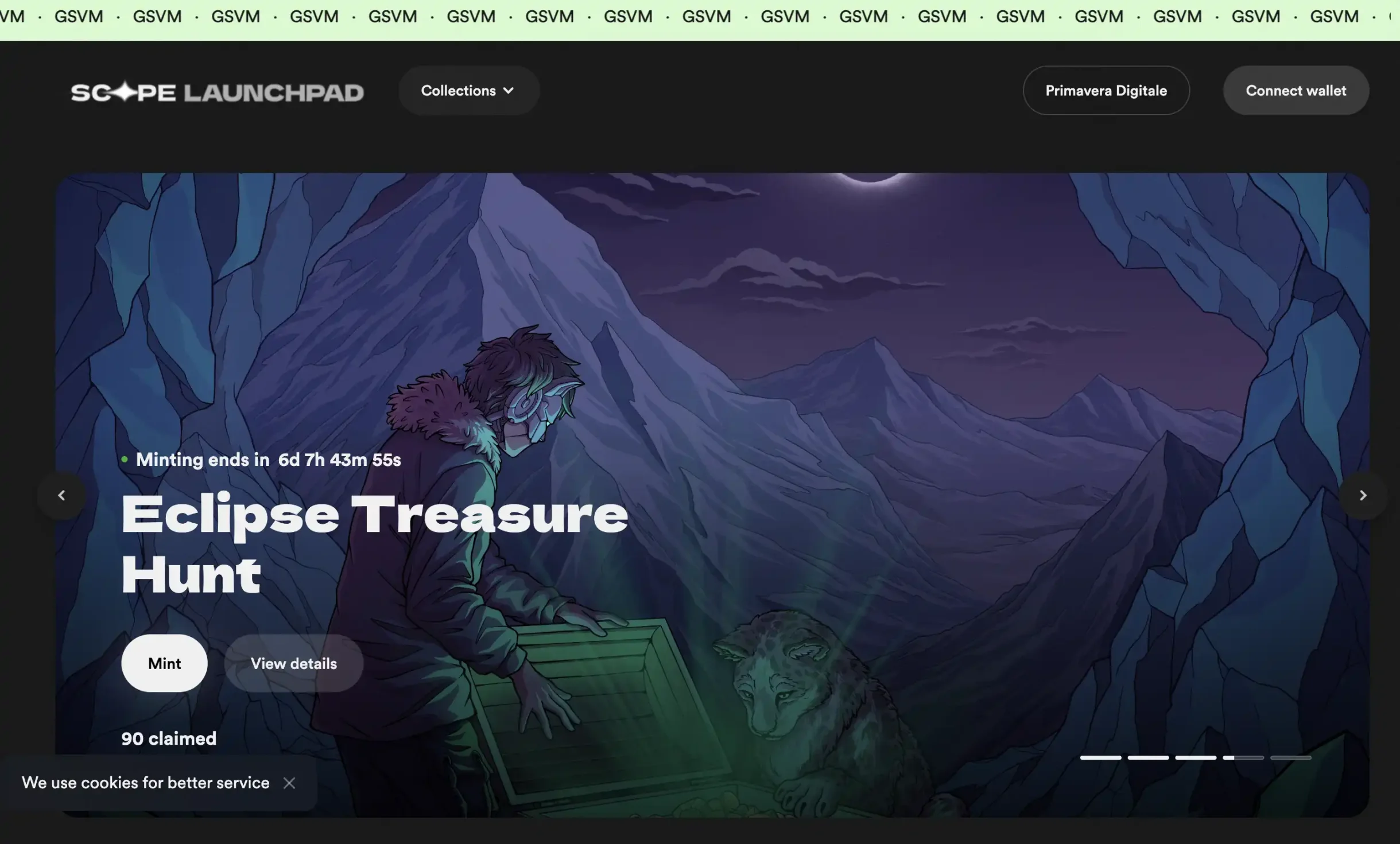
Minty.Market
A permissionless NFT platform launched by HorseLabs, which just officially went live on March 28. The team also created a launch platform for NFTs and memes.
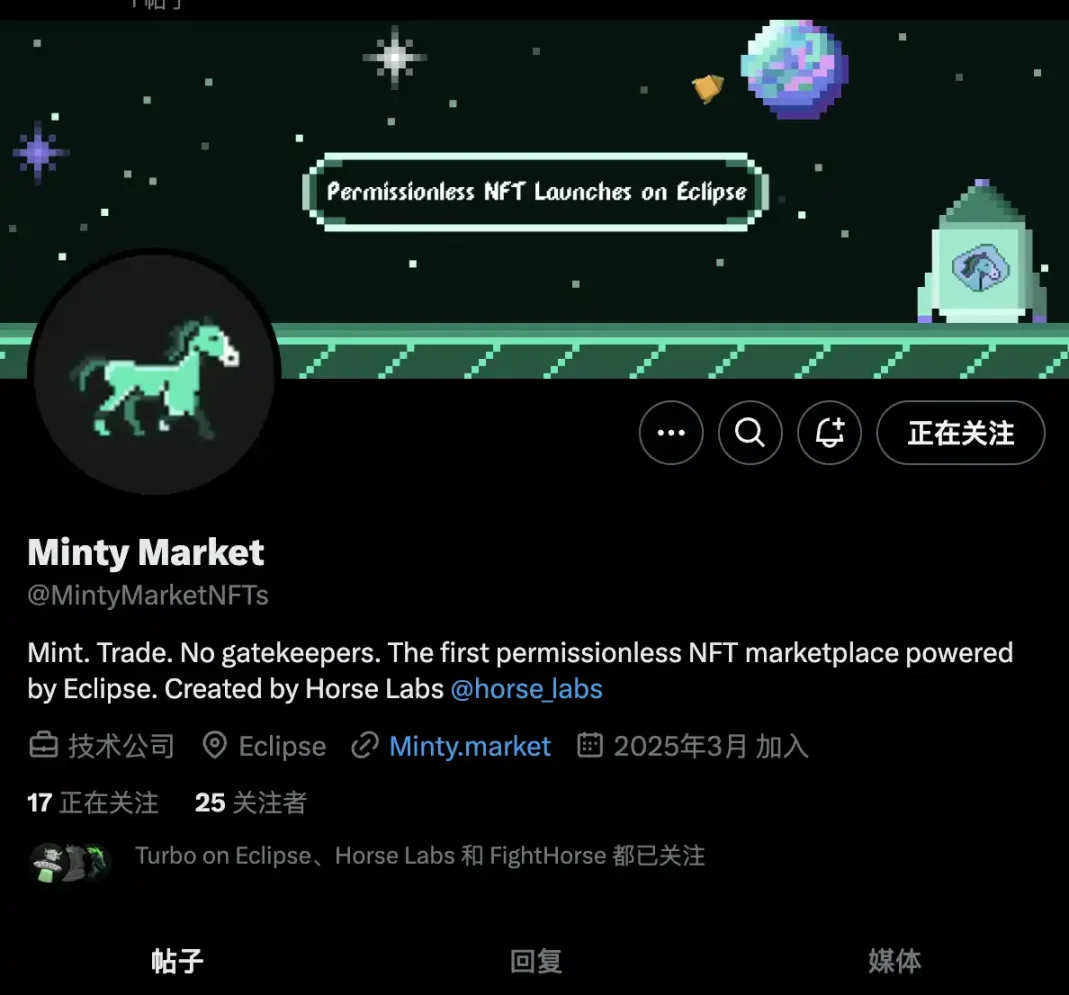
GameFi Ecosystem
Send Arcade
SendArcade is an innovative blockchain gaming platform running on the Solana blockchain and Eclipse mainnet, launched by Send. Players familiar with the Solana ecosystem know that Send is an important hub for Solana's AI initiatives, responsible for its ecosystem's hackathon competitions and the launch of Solana's On-Chain Kit. Last month, the number of players in Eclipse's Send Arcade surpassed 45,000.
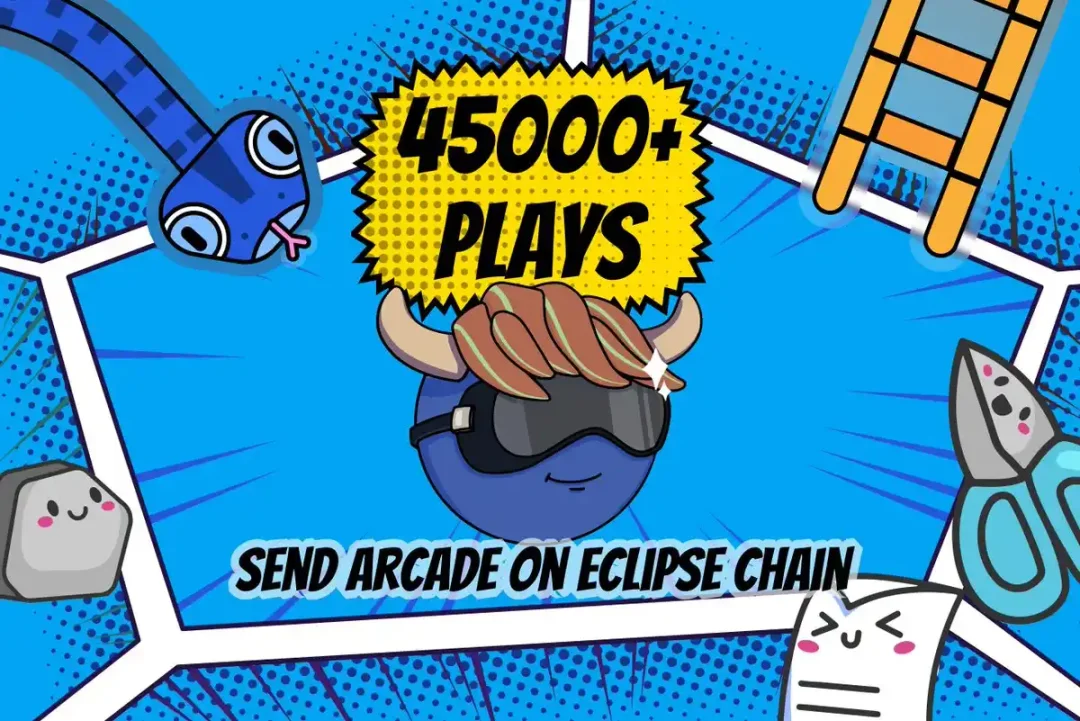
Turbo Tap
TurboTap is an official cattle-raising game from Eclipse, featuring the previously mentioned mascot "Turbo Cow." It is a GameFi that players must participate in within the ecosystem. The gameplay is simple: raise cattle, and as long as your wallet or protocol has funds, you can passively earn grass "similar to Sonic's token holding to earn PP points," converting Eclipse's points "airdrop expectations" into the chain's capital stock.

Hedgehog
Hedgehog is akin to Eclipse's PolyMarket, where users can bet on various prediction topics and earn profits.
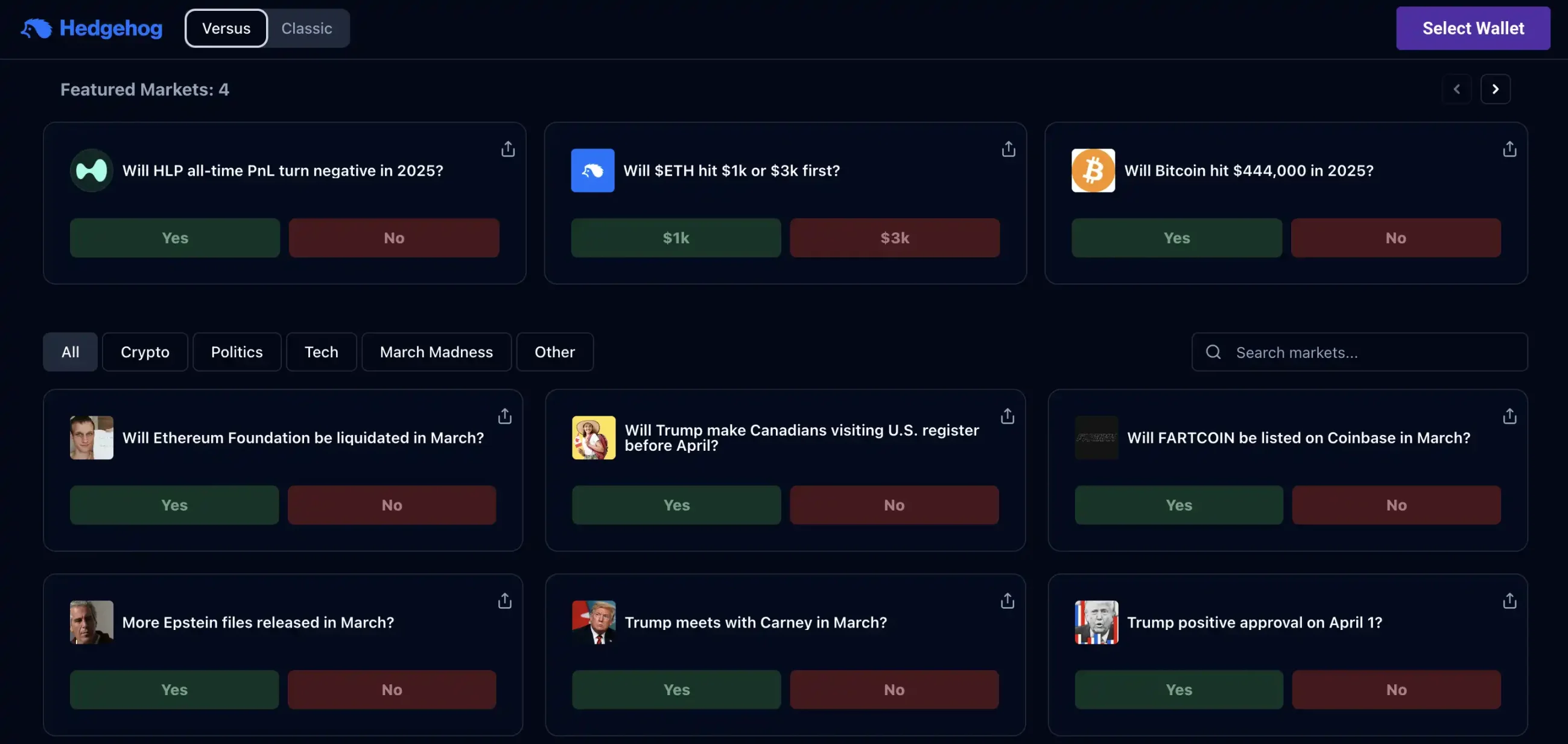
DeFi Ecosystem
Astrol
Astrol is a native lending protocol on the Eclipse ecosystem. They are currently running a points activity where users can earn lending rewards while borrowing on Astrol, as well as receive future token airdrops.
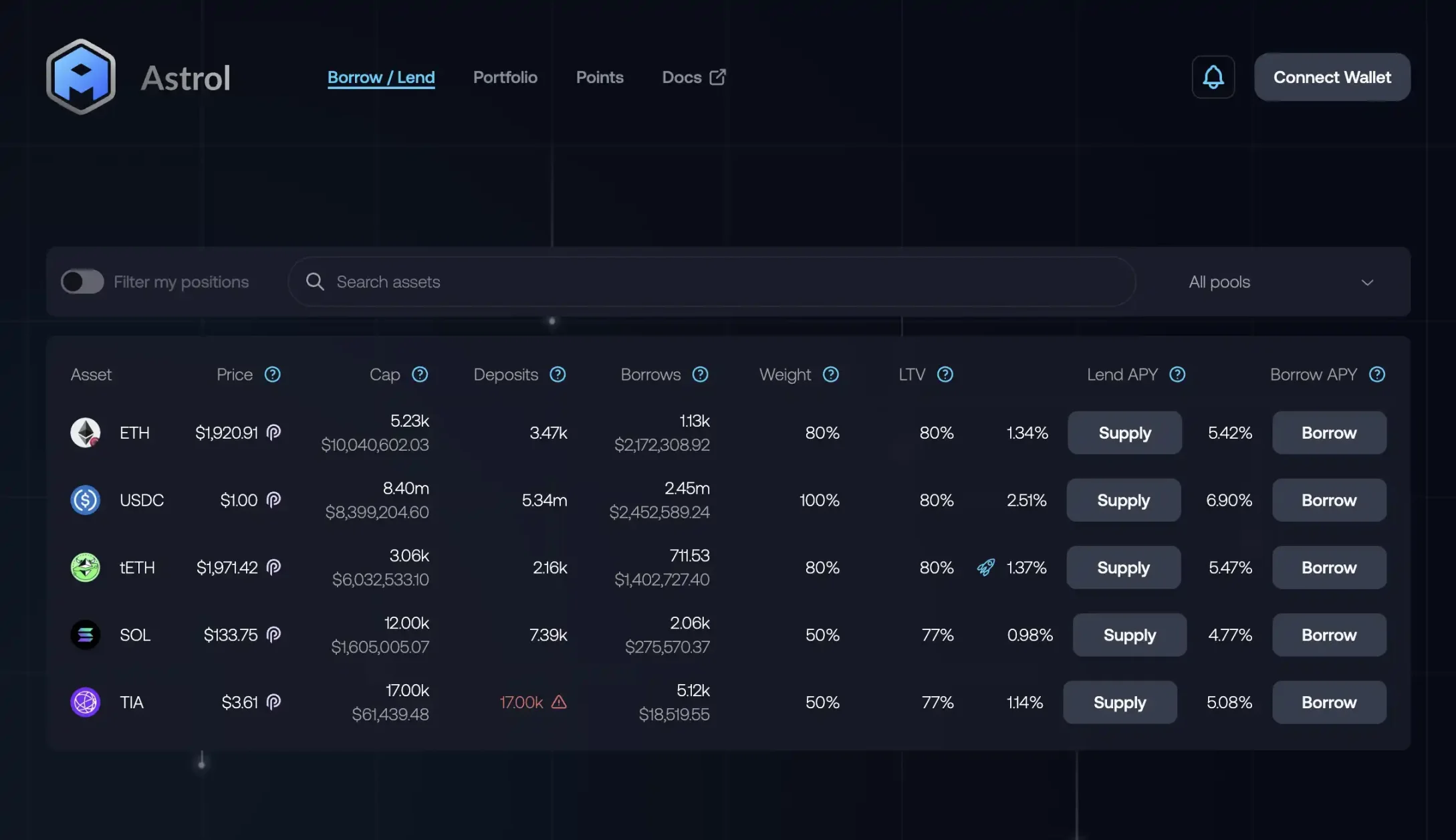
Invariant
Invariant is the native DEX protocol of the Eclipse ecosystem. During interactions, several liquidity pools can also receive airdrop expectations from the platform's points activities.
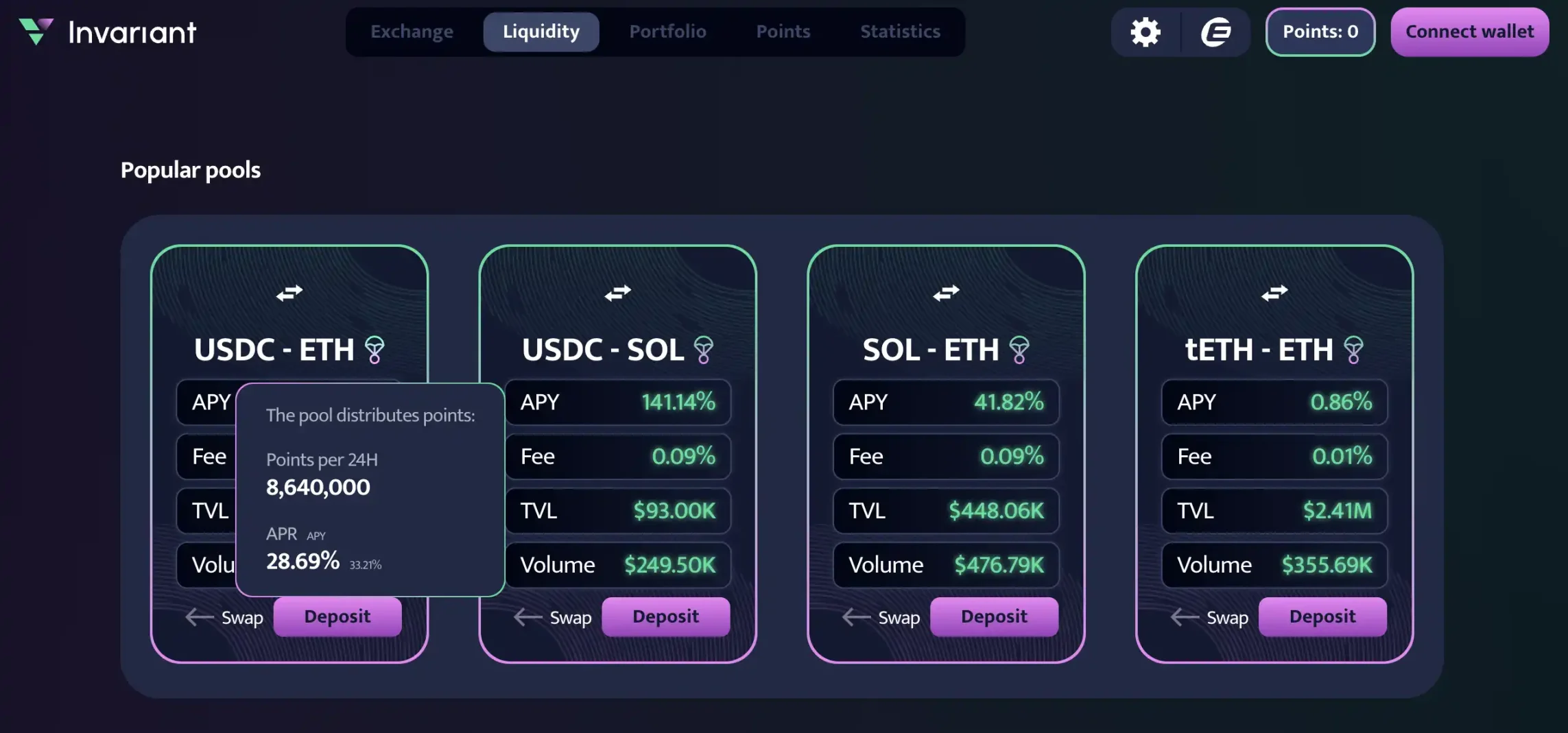
Umbra
Umbra is a deeply integrated native DEX of Eclipse. Recently, it has collaborated with Astrol, Nucleus, and the official Eclipse team, allowing users to earn points from both platforms as well as bonus points from the official cattle-raising game Turbo Tap when forming LP pools.
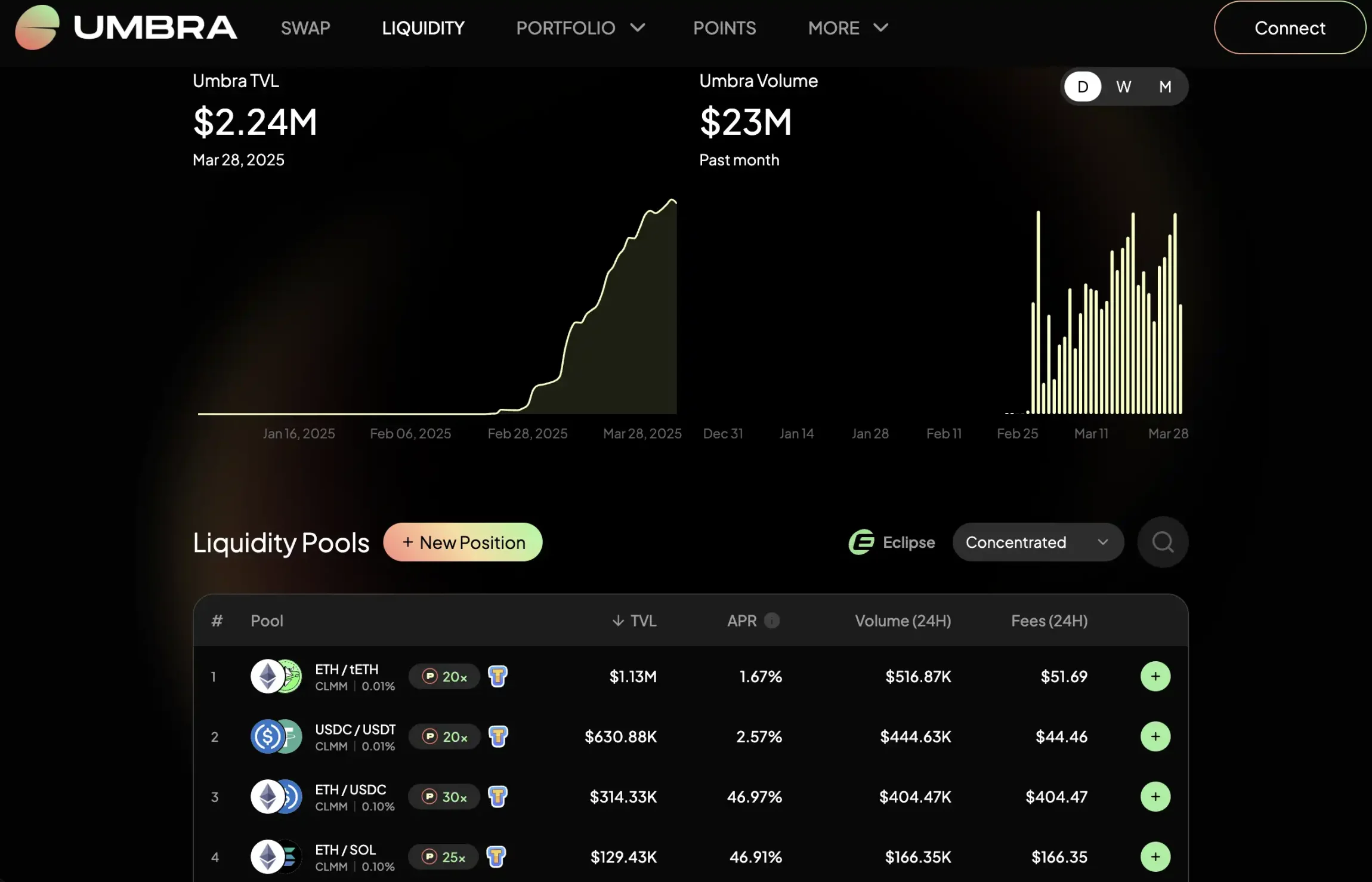
Meme Ecosystem
Fight.Horse
Fight.Horse, as an SVM-native meme launcher, is a product of HorseLab, like Minty.Market mentioned above, and is currently deployed only on Eclipse. Although the meme coin culture and infrastructure in the Eclipse ecosystem have not yet become widespread, with few basic dashboards and supporting bots, the combination of Solana's ease of use and Ethereum's liquidity concept is indeed promising. With more support in the ecosystem, it could become a good liquidity pool.
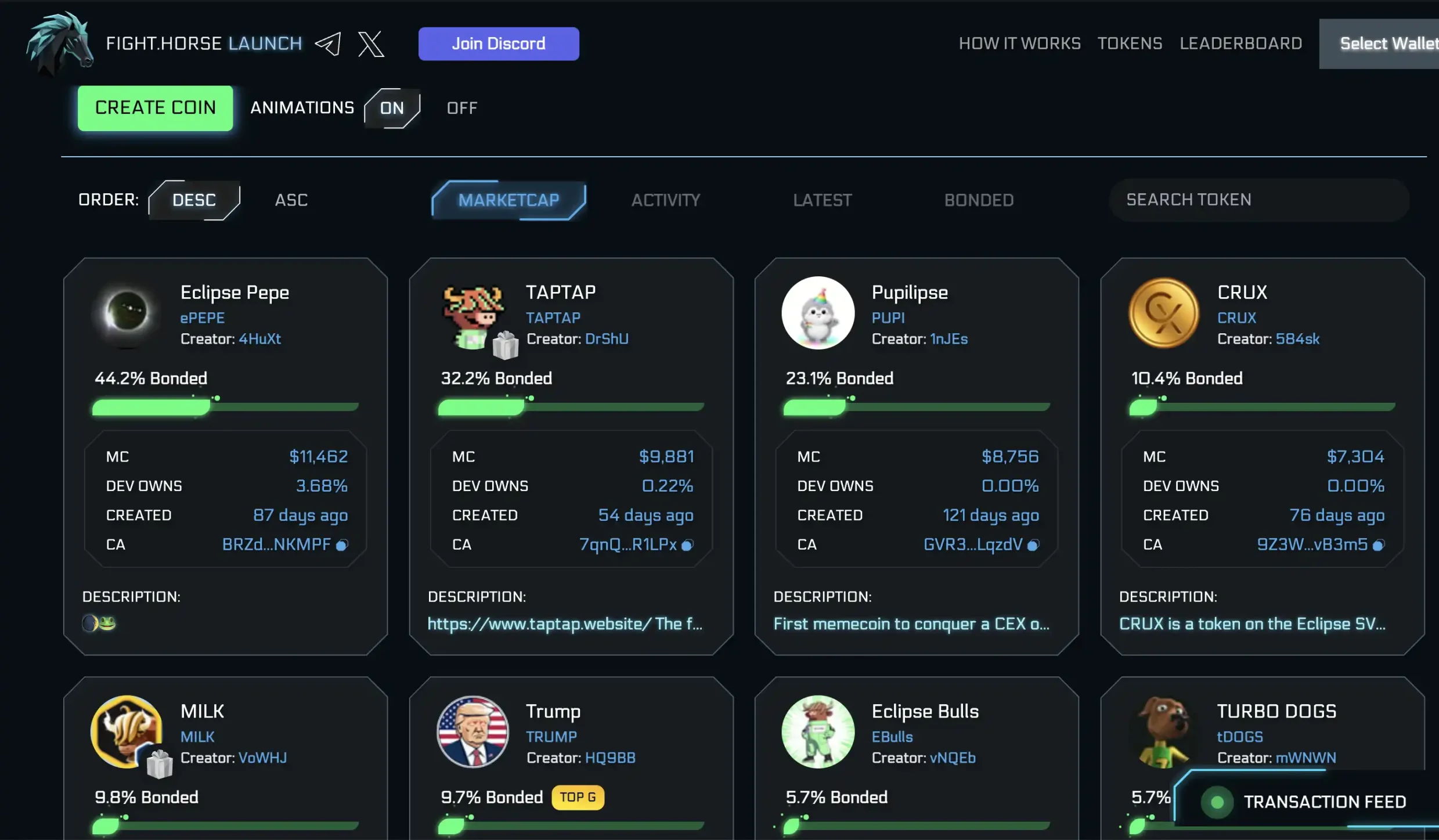
Eclipse's "Turbo the Cow" is almost ready for action, and the TGE is imminent. In such a crowded Layer 2 market, Eclipse may indeed occupy Ethereum's liquidity and high performance, ushering in a new era of blockchain applications, or it may follow the path of most L2s and fade into obscurity. Everything remains uncertain, but as we gradually move towards larger-scale adoption, the continuous emergence of new technologies is essential. Eclipse undoubtedly contributes its part to this effort.
免责声明:本文章仅代表作者个人观点,不代表本平台的立场和观点。本文章仅供信息分享,不构成对任何人的任何投资建议。用户与作者之间的任何争议,与本平台无关。如网页中刊载的文章或图片涉及侵权,请提供相关的权利证明和身份证明发送邮件到support@aicoin.com,本平台相关工作人员将会进行核查。




